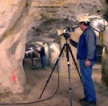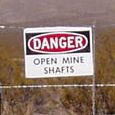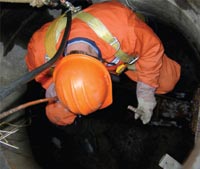Workplace safety professionals who want the ability to interact with each other more than just once a year at trade shows and conferences now have a new resource.
This year marks the 20th anniversary for the Chicagoland Safety & Health Conference, co-sponsored by the OSHA and slated for September 15-18 at Northern Illinois University, 1120 E. Diehl Road in Naperville.
Good communication is one of the most important tools for ensuring workers’ safety and work efficiency, especially when confronting the hazards of confined space entry. Benefits are also realized in productivity, costs, and workers’ confidence. In some circumstances, communication makes an otherwise impossible task possible.

The 4CF sensors are being recalled by City Technology, a British company, because they may fail without warning to respond to CO that is present.
A10 Committee members will lead the discussion and answer questions during the event, designed to introduce components of the new standard and how it can be implemented in construction and demolition operations. Last week, NAHB President Sandy Dunn said the standard, in it present form, "will be useless for the construction industry."
ASSE member Gary Lopez, CSP, testified that the proposed rule showed "lack of full appreciation of the on-the-job realities ASSE's members face every day as they strive to help workers protect themselves when entering confined spaces."
“Thanks to the hard work of the legislature and representatives of labor and industry, we have enacted one of the nation’s strongest mine safety laws, which completes the work begun following the Quecreek Mine accident,” said Gov. Edward Rendell, signing the new law.
The rule would require that underground coal mines provide refuge alternatives to protect miners when a life-threatening event makes escape impossible.
An alliance between OSHA and the American Society of Safety Engineers continues with the goal of fostering a culture of prevention for safety and health hazards at U.S. job sites.

EPA has not decided how to use all the authorities or tools available to it to achieve the Act's goals, and, meanwhile, it has not been reporting program results in relation to homes at risk in its performance reporting.

Correspondent Scott Pelley's segment on the problem of dust explosions will include interviews of former CSB Chair Carolyn Merritt and OSHA chief Edwin Foulke Jr. This CSB photo shows the damaged Imperial Sugar plant.
"This horrible tragedy underscores the need for all employers to implement effective safety and health management systems," said Louis Ricca Jr., acting administrator for OSHA's New York region.

NIOSH wants to know how stakeholders envision improving performance of instruments such as this personal dust monitor for miners. The input will contribute to a Nov. 13-14 DREAM workshop.
FirePASS's William Costello said the technology could have prevented February's Imperial Sugar Refinery explosion in Port Wentworth, Ga. OSHA chief Edwin Foulke Jr. responded with a letter clarifying the agency's denial of variance for the system.
Three employees were killed by steam and hot ash when boiler tubes ruptured in the lower vestibule/dead air space of boiler Unit #3 in the plant's boiler house in Salem, Mass.

This NIST photo shows electronics engineer Dennis Camell aligning antennas in a California mine for a study identifying optimal frequencies for radio transmissions in tunnels.

Since 1999, more than 200 people have died in recreational accidents at abandoned and active mine operations across the country; 148 of those incidents occurred in the past five years.

With somewhere in the neighborhood of 10 million people employed, construction is one of the largest industries in the United States. That’s a lot of people to send home safe every day. Construction work sites present a number of potential safety hazards; employers, with increased awareness, are emphasizing safe work habits to reduce injuries.
This proposed rule, for which the agency took comments in 2005, is one of two important ones expected to be proposed in June.
Employee exposure to electrocution and being caught in unguarded or unexpectedly energized driers and other machinery were also among the dangers OSHA found.